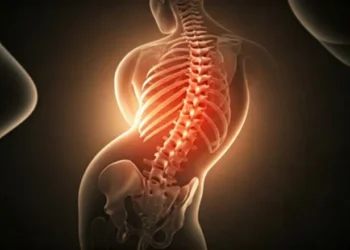Nearly 1 in 12 newborns in the United States in 2020 – or about 300,000 infants – were exposed to alcohol, opioids, marijuana or cocaine before they were born. Exposure to these substances puts these newborns at a higher risk for premature birth, low birth weight and a variety of physical and mental disabilities.
These substances can have direct and indirect consequences on fetal development. By crossing the placental barrier directly, they can cause abnormal development. And by affecting the mother’s organs, they can reduce blood flow to the placenta and damage the health of the growing fetus.
Considerable sociodemographic and geographic disparities exist in the U.S. regarding the rates of prenatal substance exposure. This includes in West Virginia, where I live, a rural Appalachian state struggling with extraordinary rates of substance use and an opioid crisis.
As an epidemiologist, I study the relationship between substance use during pregnancy and infant health outcomes. I am a member of the Project WATCH team, which is a long-standing, state-mandated surveillance and referral system in West Virginia funded by the West Virginia Department of Health. The surveillance system expanded in 2020 to include substance exposure data from all births in the state.
Staggering numbers
Our research work showed that between 2020 and 2022, prenatal substance exposure in West Virginia was nearly 50% higher, at 124 per 1,000 births, than the national rate of 80 per 1,000 births. This means that nearly 1 in 8 infants born in the state had exposure to substances during pregnancy.
We found that the rate of prenatal cannabis exposure in West Virginia was 80 per 1,000 births, similar to the national rate. However, the rates of opioid exposure, 44 per 1,000 births, and stimulant exposure, 21 per 1,000 births, during pregnancy were nearly 10 times higher than national rates. Additionally, 1 in 5 women in the study smoked, and 64% of the infants exposed to substances were also exposed to smoking during pregnancy.
There are many reasons why the numbers in West Virginia are staggering. Economic challenges, including poverty, low education and limited job opportunities, contribute to chronic stress, a known risk factor for substance use. Moreover, nearly half the population lives in rural areas with a limited number of hospitals and clinics. The geographic isolation limits access to health care and substance use treatment services. Finally, stigma and judgment within close-knit rural communities may discourage these mothers from seeking help.
Substance exposure and infant outcomes
Our earlier work demonstrated that alcohol consumption during pregnancy was associated with preterm birth, which is when a baby is born before the 37th week of pregnancy, and low birth weight, defined as babies born weighing less than 5 pounds, 8 ounces (2,500 grams).
Our more recent study has shown that prenatal opioid exposure is also associated with low birth weight, while stimulant exposure was associated with preterm birth.
Stimulants include cocaine, methamphetamines, ecstasy and prescription stimulants such as those used for the treatment of attention-deficit/hyperactivity disorder. Illicit or misuse of prescription stimulants have increased among pregnant women over the past decade.
While many national and statewide efforts have focused their attention on addressing the opioid crisis, the prevalence of prenatal stimulant use remains a growing and underrecognized epidemic in the U.S.
After alcohol, cannabis is the most common psychoactive substance used during pregnancy and its rate is increasing. This trend in cannabis use may be due to the increasing legality for medicinal or recreational purposes and the social acceptability that comes with it.
In addition, many people wrongly assume that cannabis is relatively safe and helps manage pregnancy-related conditions such as morning sickness, nausea, vomiting, weight gain and sleep difficulty.
However, a growing body of research, including our own, has shown that prenatal cannabis exposure is associated with adverse pregnancy outcomes, including low birth weight, preterm birth, stillbirth or hypertensive disorders of pregnancy.
In addition, using multiple substances during pregnancy poses a higher risk to infants than using a single substance. We found that compared to no substance exposure during pregnancy, the risk of low birth weight was twice with opioids alone, four times with concurrent exposure to opioids and stimulants, and almost six times with concurrent exposure to opioids, stimulants and cannabis.
Another adverse outcome that is associated with prenatal substance exposure, primarily to opioids, is a set of withdrawal symptoms experienced by the newborn known as neonatal abstinence syndrome. Symptoms include irritability, feeding difficulties, tremors and respiratory issues. The syndrome requires specialized care and attention in neonatal units and a prolonged stay in the hospital.
Alongside the rising prevalence of opioid use in pregnancy, a fivefold increase in incidence of infants with this condition has been documented over the past two decades. The highest rate has been observed in West Virginia, at 53 per 1,000 births. Other states with high rates include Maine, Vermont, Delaware and Kentucky, which are between three and four times the national average of 7.3 per 1,000 births.
Substance exposure in the womb and long-term outcomes
Research on long-term outcomes of infants exposed to substances in the womb is still evolving. Limited studies have shown an association between neonatal abstinence syndrome and long-term neurodevelopmental consequences that may develop as early as 6 months old and persist into adolescence. These include delays in learning and language skills, physical growth and motor skills, as well as difficulty in regulating behavior and emotions.
However, research on the long-term effects of prenatal alcohol exposure is well established. A broad range of deficits are referred to as fetal alcohol spectrum disorders. These include growth deficiency, developmental delay, craniofacial malformations, intellectual disabilities, behavior issues and emotional well-being. A recent study of first graders in the U.S. estimated that the prevalence of fetal alcohol spectrum disorders range from 1% to 5%, which means up to 1 in 20 school-age children may have this disorder.
With the changing landscape of substance use in the U.S., more research is needed to understand and establish the association between the various emerging types and forms of substance exposures and their lasting effects. But the findings are difficult to discern because of the influence of other environmental factors, preexisting medical conditions and social determinants of health.
Efforts to reduce harms
As a maternal and child health epidemiologist, I am fortunate to be part of the Project WATCH team that works closely with health care providers and policymakers.
As high-risk infants are identified through this program, its referral system notifies pediatricians of substance exposure and connects these families to early intervention services and home visitation programs.
These services include developmental testing, interventions appropriate to the child’s needs and case management during the first few years of life. The data also informs state-level strategies and initiatives to address the substance use crisis for this vulnerable population.
This article is republished from The Conversation, a nonprofit, independent news organization bringing you facts and trustworthy analysis to help you make sense of our complex world. It was written by: Amna Umer, West Virginia University


 Home
Home










